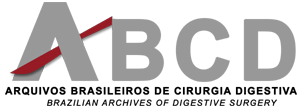BACKGROUND: Gastroesophageal reflux disease (GERD) is widespread in the population and the tests used for diagnosis are endoscopy, radiological contrast, scintigraphy with 99m Tc, manometry and 24 h phmetry. AIM: To analyze the effectiveness of these tests in patients with GERD who underwent surgical treatment by video-laparoscopy. METHODS: A retrospective study of 126 patients diagnosed with GERD, who underwent preoperative upper gastrointestinal endoscopy, radiologic examinations of the esophagus, stomach and duodenum, scintigraphy and manometry of the esophagus. The 24 hours phmetry was performed in small number of patients. RESULTS: Endoscopy reflux esophagitis was diagnosed in 91.7% of cases and hiatus hernia in 88.6%. Radiological examinations showed the presence of gastroesophageal reflux in 80.2% and hiatus hernia in 91.5%. Scintigraphy showed gastroesophageal reflux in 85.1%. Esophageal manometry was normal in 6.45%. CONCLUSION: Upper digestive endoscopy presented high sensitivity for the diagnosis of reflux esophagitis, but scintigraphy was better showing the reflux, so did contrasted radiographic examination.
Gastroesophageal reflux; Endoscopy, digestive system; Radionuclide imaging






